Delicious Japanese chicken curry recipe for a weeknight dinner! Tender pieces of chicken, carrots, and potatoes cooked in a rich, savory curry sauce, this Japanese version of curry is a must-have for your family meal.
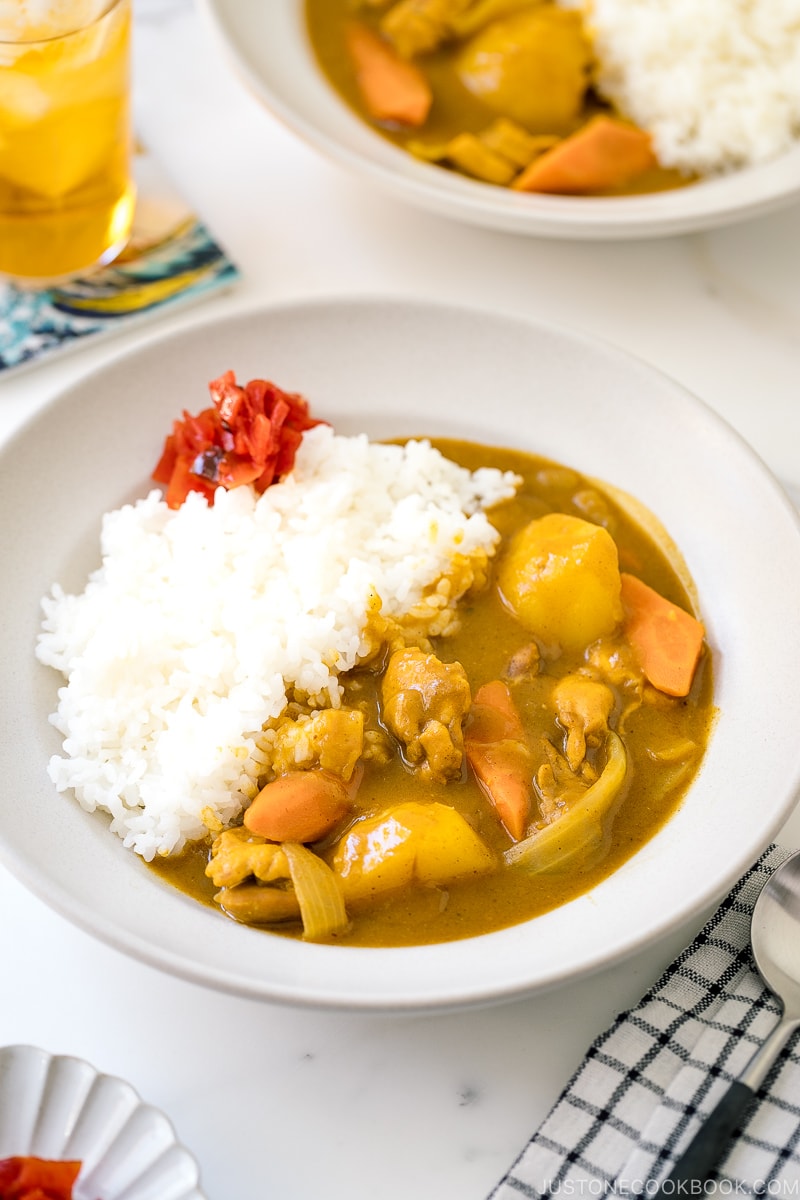
This may come as a surprise, but Japanese Curry, aka Curry Rice (Kare Raisu, カレーライス), is an exemplary comfort food and one of the most-loved home-cooked dishes in Japan. I grew up on curry rice, as my mom would make it as frequently as I can recall.
The bite-sized chunks of meat, the thick-cut vegetables, the rich and creamy brown curry sauce, and the fluffy rice make every bite so comforting and exciting. Not only is it a meal that’s easy to make on busy nights, but it also tastes better on the second day.
So, if you wish to master Japanese home cooking, you must add Japanese curry to your repertoire. Let me show you how to make Japanese Chicken Curry (チキンカレー) today!
Table of contents
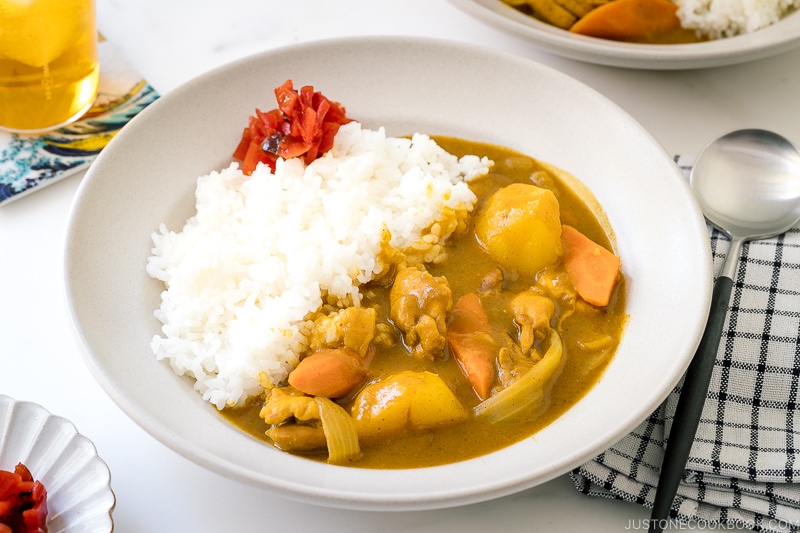
What is Japanese Curry?
Japanese curry is a thick curry with a stew-like consistency and commonly includes protein, sweet onions, carrots, and potatoes. The sauce is thickened by a roux (a mixture of fat and flour and an addition of curry spices).
You can find many variations of Japanese curries, ranging from regions to households, but the most basic one uses chicken, which is the recipe I’m sharing here.
Don’t miss my Japanese curry recipes roundup, which includes vegetarian curry and more!
History of Japanese Curry
Curry was introduced to Japan in the late 1800s by the British, and they were initially Western-style stews mixed with curry powder. The Japanese adapted curry to their own version, and ‘Curry Rice’ (Kare Raisu, カレーライス) was born soon after. By the 1950s, S&B Foods developed a convenient instant mix — known as curry roux — in block form so everyone could make curry rice easily at home.
Today, curry has become a staple of the Japanese home and is widely available in restaurants and food halls in departmental stores. The popularity extends beyond Japan; you can find its presence in many other Asian countries.
What Makes Japanese Curry Different from Other Curries
Japanese curry is quite different from most other curries worldwide — it has a thicker consistency, and the taste leans on the sweet and savory side. The unique sweetness comes from onions, carrots, and other additions like honey and grated apples.
The sauce resembles a rich, thick demi-glace layered with spices and earthy flavors. Some would describe Japanese curry more like a hearty stew than a typical curry like Thai or Indian. It isn’t spicy, so it is suitable for children.
It’s also served with Japanese short-grain rice, which is sticker than basmati rice or long-grain rice. The rice grains also soak up the curry.
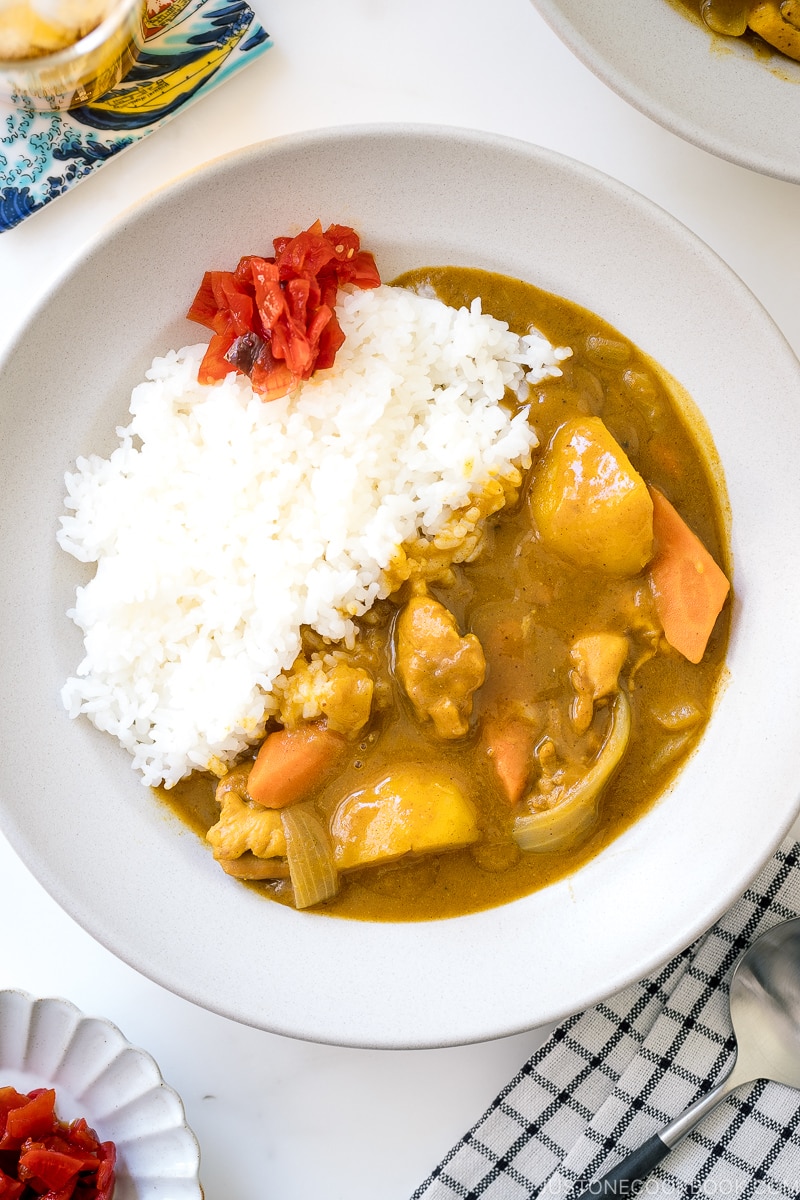
The Base Flavor – Japanese Curry Roux
The reason why we can make Japanese curry in a short time is that we use the convenient Japanese Curry Sauce Mix (curry roux カレールー) that comes in a box. The curry roux imparts a unique depth of aromatic spice flavor and creaminess to the dish. I’m not a big fan of “instant” or boxed food, but I have to say Japanese Curry Roux is an exception!
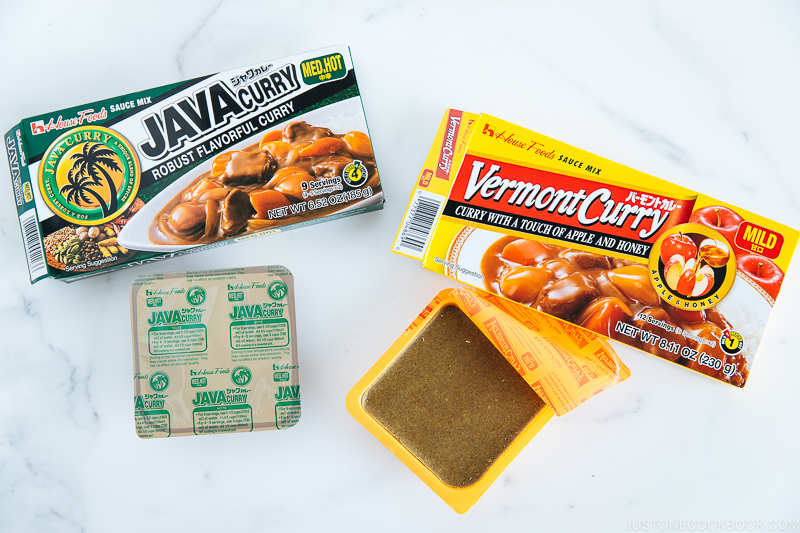
Spice Level
Each brand of curry roux usually comes with three levels of spiciness — Mild, Medium, or Hot. Since these are packaged for Japanese taste, the hot level is not nearly as spicy as Thai or Indian curry.
Too Salty?
Some of you may find the pre-boxed curry roux salty, and I agree. It does have a strong (salty) taste, which is why it goes well with plain steamed rice. The Japanese palate, in general, is gravitated to salty, savory foods.
Here are my suggestions:
- Make my homemade curry roux.
- Use water or half water half chicken stock instead of all chicken stock (because the saltiness of the stock varies).
- Use less curry roux.
- Add more water to dilute the roux, but note that the curry sauce will be more watery.
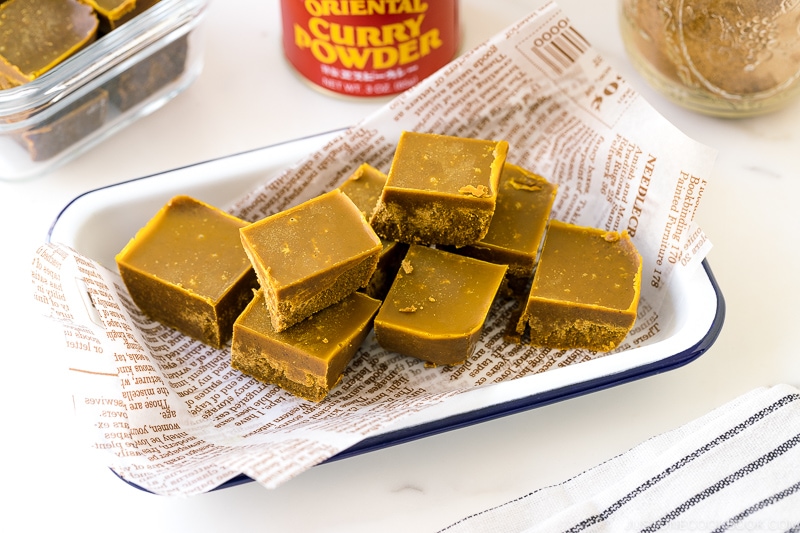
Homemade Japanese Curry Roux
Although the boxed stuff may spare you some time in the kitchen, you’ll be surprised at how easy it is to make your own Japanese Curry Roux at home. And just like all curries, curry roux is best made from scratch. What are the other good reasons for homemade roux?
- No MSG, artificial flavors, or other food additives are commonly found in boxed mixes.
- You can customize the flavor, spice level, salt level, and thickness.
- You can also make it gluten-free or vegetarian/vegan-friendly.
If you decide to make the Curry Roux from scratch, it only takes 30 minutes. Click here for the recipe.
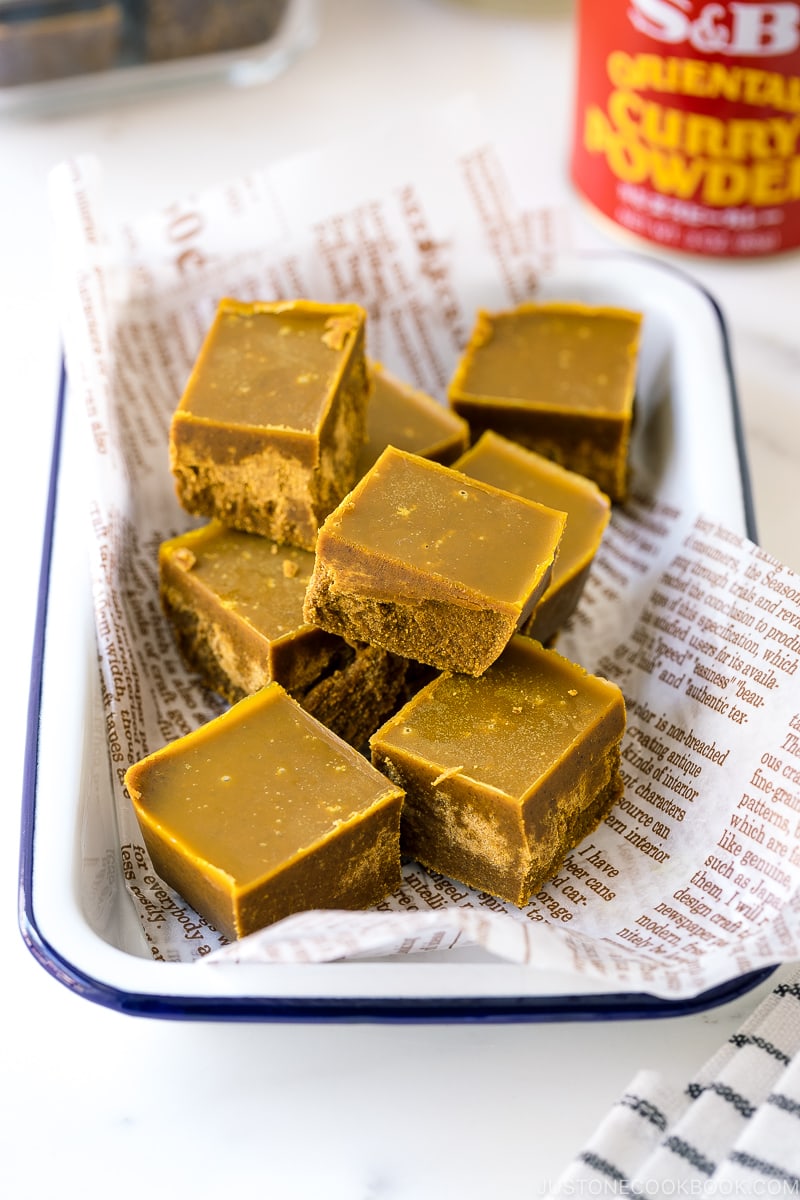
Secret Ingredients – Personalize Your Curry
My mom always adds some grated apples and different condiments to the curry. She says, “If you use just the boxed curry roux, your curry will always taste the same. It will not be different from your neighbor’s curry.”
So she taught me two tricks. 1) Use two different brands of curry roux – you can even mix the spice levels, like mild and medium spicy. 2) Use additional seasonings.
My mom and I would use a few combinations of the following ingredients to enhance the flavor and give some complexity to the curry.
* Bold items are our frequently used condiments.
* Use 1-3 tsp of secret ingredients to start. These are supposed to be “secret” ingredients and you don’t need to add a lot of it.
* Add the secret ingredients with the broth/water and cook together.
Sweet Taste
- Chutney
- Grated apple
- Honey (Amylase in honey breaks starch and causes viscosity loss; therefore, add honey with broth and cook it. Do not add it after the curry roux as the curry will become watery.)
- Ketchup
- Mashed banana
- Mirin
- Orange/Apricot jam
Refreshing/Sour Taste
- Lemon (Add right before serving)
- Tomato
- Yogurt
Spicy Taste
- Red chili pepper
- Black pepper
- Cayenne pepper
Fragrance
- Cumin
- Bay leaf
- Cinnamon
- Curry leaves
Umami and Depth
- Butter (Add with roux)
- Chocolate (Add with roux)
- Garlic cloves (Add while sauteeing)
- Fresh ginger (Add while sauteeing)
- Instant coffee
- Milk (Add with roux)
- Oyster sauce
- Red wine
- Sake
- Soy sauce
- Tonkatsu sauce or Worcestershire Sauce
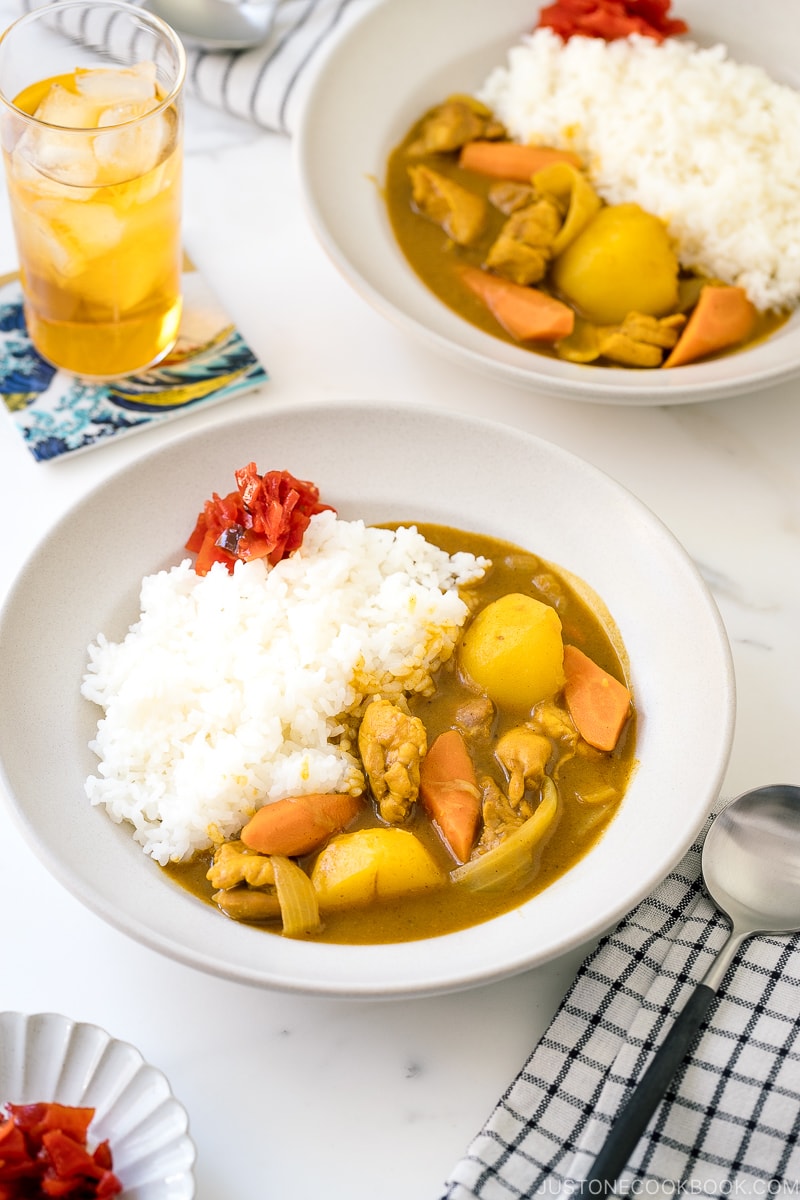
8 Helpful Tips to Make Japanese Chicken Curry
Tip #1: Cut ingredients into uniform shape
This helps to cook everything evenly at the same time.
- Chicken: I recommend a Japanese cutting technique called sogigiri (そぎ切り), which slices the ingredient at an angle for more surface area.
- Onions: I cut into thick wedges for additional texture.
- Carrots: It takes time to cook carrots, so I recommend another Japanese cutting technique called rangiri (乱切り), which is a rotating cut. You rotate the ingredients as you cut. This creates a more open surface.
- Potatoes: I recommend Yukon gold potatoes for curry if you prefer to keep the potato shape in the final presentation. Russet potatoes tend to get dissolved by the end of cooking. Cut into 2 inches (5 cm) size, which is ideal.
Tip #2: Cook the onion till tender and golden
The nicely browned onions add a ton of flavor to the final curry. If you have an additional 5-10 minutes, caramelize the onion.
Tip #3: Cover the ingredients with just enough broth (or water)
When you add the broth/water, be sure the ingredients are covered with enough water and not submerged completely. The “barely covering” situation is called hita hita (ひたひた) in Japanese. The ingredients will release more moisture into the cooking liquid as you simmer.
Tip #4: Add “Secret Ingredients” to the broth
Add your ‘secret ingredients’ with the broth before you bring everything to a simmer, before adding the curry roux.
Tip #5: Do not forget to skim
Skimming is a significant step in Japanese cooking. We skim the scum and impurities to achieve a refined taste.
Get a fine mesh skimmer and fill up the measuring cup with water. Skim the impurities and dunk the skimmer in the water to clean. Repeat until the broth is clean.
Tip #6: Add two cubes of curry roux at a time
Make sure all the curry roux cubes are dissolved completely. You don’t want to bite into a chunk of curry cube while eating!
Fill up a ladle with broth and add two cubes. Using a spoon or chopsticks, let the roux dissolve completely. Then, add two more cubes and repeat.
Tip #7: Watch out when simmering curry
Always watch the curry after you add the roux. The thick curry sauce gets burnt easily at the bottom of the pot.
- Need to simmer uncovered for 10 minutes after adding curry roux.
- Use low heat to simmer.
- Stay in the kitchen, and keep stirring!
Tip #8: Make a big batch and store
Japanese curry is ideal for freezing. I often cook up a big batch of leftovers and keep them in the refrigerator for a few days or in the freezer for up to a month.
Oh, one more thing! Starches like potatoes and sweet potatoes will change their texture after freezing, so remove them if you plan to freeze the curry.
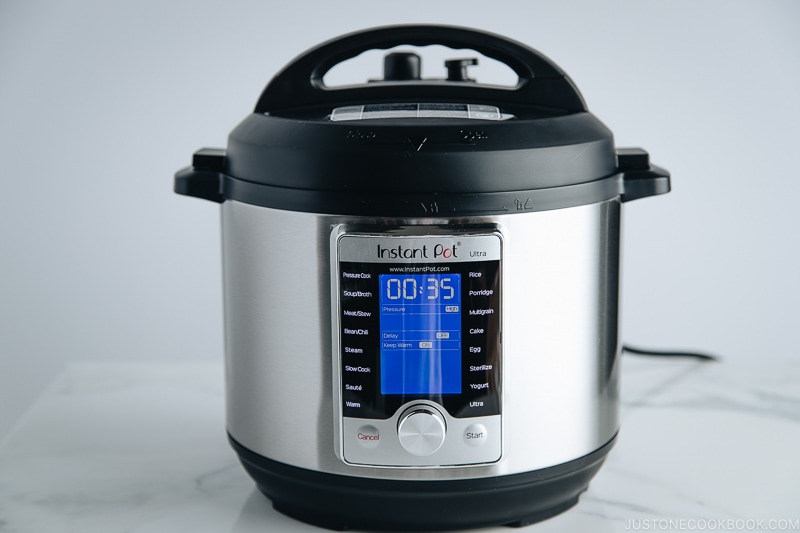
Make Japanese Curry in a Pressure Cooker
Do you own an Instant Pot or a pressure cooker? You can also prepare this comfort dish using my Instant Pot (Pressure Cooker) Japanese Curry recipe.
What to Serve with Japanese Curry
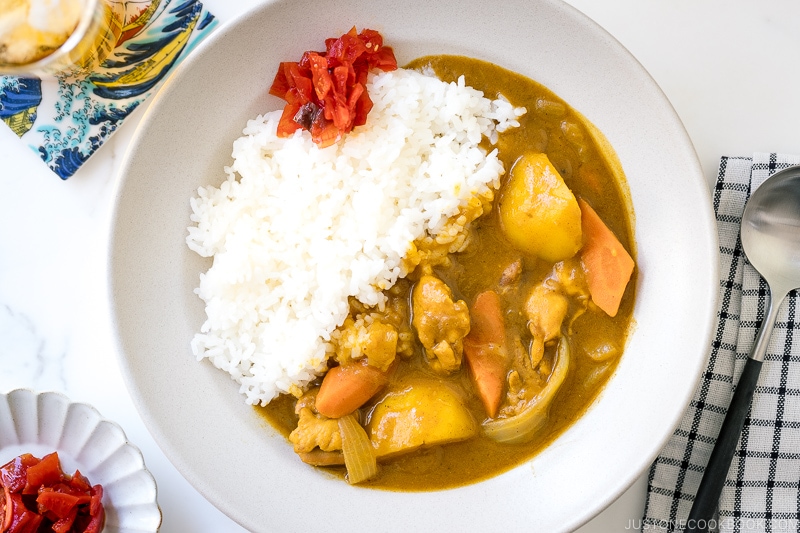
We typically serve the Japanese curry over rice alongside fukujinzuke, a relish made of finely chopped vegetables such as daikon, eggplant, and lotus root, pickled in a soy sauce-based liquid. It will warm you right up!
I hope you enjoy this delicious Japanese Chicken Curry recipe!
More Delicious Japanese Curry Recipes
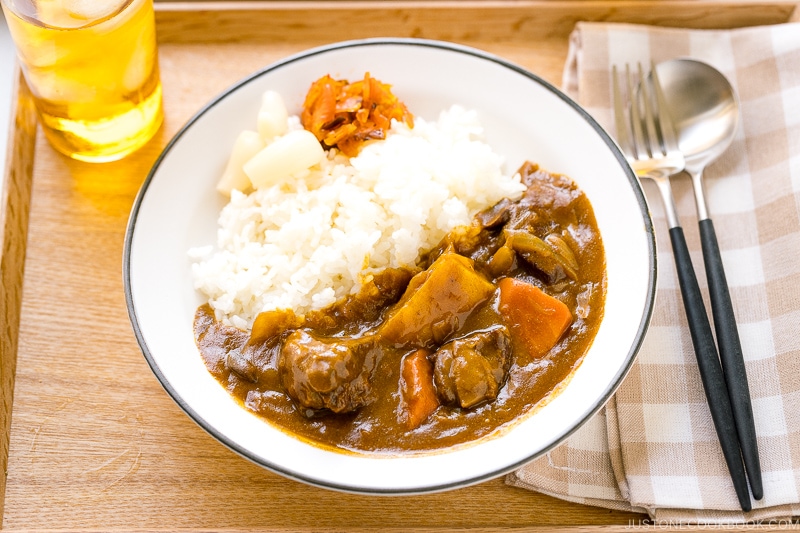
Wish to learn more about Japanese cooking? Sign up for our free newsletter to receive cooking tips & recipe updates! And stay in touch with me on Facebook, Pinterest, YouTube, and Instagram.
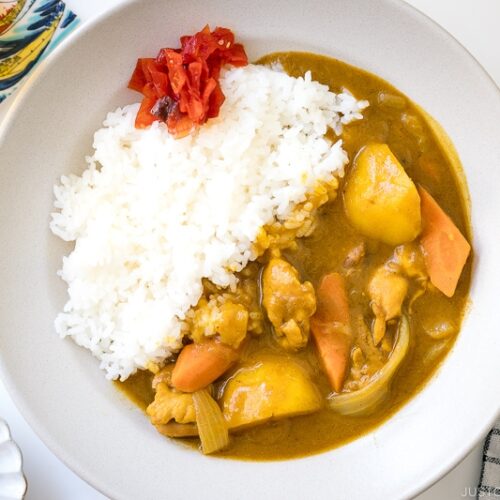
Japanese Chicken Curry
Video
Ingredients
- 2 onions (large; 1.5 lb, 670 g)
- 2 carrots (6.7 oz, 190 g)
- 3 Yukon gold potatoes (15 oz, 432 g)
- 1 tsp ginger (grated)
- 2 cloves garlic
- ½ apple (6 oz, 170 g)
- 1½ lb boneless, skinless chicken thighs (see Notes for substitutions)
- freshly ground black pepper
For the Curry Sauce
- 1½ Tbsp neutral oil (for cooking)
- 4 cups chicken stock/broth (for lower sodium, use water only or half stock and half water)
- 1 Tbsp honey
- 1 Tbsp soy sauce
- 1 Tbsp ketchup
- 1 package Japanese curry roux (7–8 oz or 200–230 g; or make my Japanese Curry Roux)
For Serving
- 8 servings cooked Japanese short-grain rice
- fukujinzuke (Japanese red pickled vegetables) (optional; or make my Homemade Fukujinzuke)
Instructions
- Gather all the ingredients. Please read my blog post on the “secret ingredient” we add to the curry. For this recipe, I add ginger, garlic, apple, honey, soy sauce, and ketchup.

To Prepare the Ingredients
- Cut 2 onions into wedges. I like to have the texture of the onions in my curry, so I cut them into thick wedges. If you prefer, you can mince or thinly slice the onions so they disintegrate into the sauce.

- Peel 2 carrots and cut them into rolling wedges (it‘s called rangiri in Japanese). This type of cut creates more surface area, which helps the carrots absorb more flavor and cook faster.

- Peel 3 Yukon gold potatoes and cut them into quarters. Soak them in water for 15 minutes to remove excess starch. Tip: Yukon gold potatoes hold their shape well. You can use russet potatoes, but they tend to disintegrate into the broth during cooking, so cut them into 6 pieces each and add to the pot toward the end of cooking.

- Grate the ginger (I use a ceramic grater) and measure 1 tsp ginger with the juice. Set aside. Mince 2 cloves garlic and set aside (I use a garlic press later when adding to the pot).

- Cut ½ apple into quarters, remove the core, and peel the skin.

- Grate the apple and set aside. Note: You also could use 1 small lunchbox apple for 8 servings.

- Cut off the extra fat from 1½ lb boneless, skinless chicken thighs and discard it. Then, cut the chicken into bite-sized pieces. I recommend cutting it diagonally (it‘s called sogigiri in Japanese) to create more surface area and flatten each piece so it cooks faster. Season with freshly ground black pepper. Tip: If you will use homemade curry roux, you can lightly season the chicken with kosher salt as well.

To Cook the Curry
- Heat 1½ Tbsp neutral oil in a large pot over medium heat and add the onion.

- Sauté the onions, stirring occasionally, until they become translucent and tender, about 5 minutes. Don‘t stir the onions too often because they won’t develop a golden color. Cooked onions add amazing flavor, so we do not want to skip this step. If you have an extra 5 minutes, definitely caramelize the onions!

- Add the minced garlic (I pass it through a garlic press for a finer texture) and grated ginger and mix well together.

- Add the chicken and cook, stirring frequently, until it‘s no longer pink on the outside. If the onions are getting too brown, reduce the heat to medium low temporarily.

- Add 4 cups chicken stock/broth. To reduce the sodium, you can substitute with water only or use half stock and half water, if you prefer. Tip: If you‘re using my homemade curry roux, you don‘t need to worry as it does not contain salt.

- Add the grated apple, 1 Tbsp honey, 1 Tbsp soy sauce, and 1 Tbsp ketchup (or any condiment you choose to add). Please read my blog post for details.

- Add the carrots and Yukon gold potatoes (if you‘re using russet potatoes, add them later in the last 15–20 minutes of cooking). The broth should barely cover the ingredients. Don‘t worry; we don‘t want too much liquid here, and additional liquid will be released from the meat and vegetables.

- Simmer, covered*, on medium-low heat for 15 minutes, stirring occasionally. *Simmer uncovered if the ingredients are completely submerged in the broth.

- Once boiling, use a fine-mesh strainer to skim the scum and foam from the surface of the broth.

- Continue to cook covered until a wooden skewer goes through the carrots and potatoes.

To Add the Curry Roux
- Turn off the heat. From 1 package Japanese curry roux, put 1–2 cubes in a ladleful of cooking liquid. Slowly let it dissolve with a spoon or chopsticks and stir into the pot to incorporate. Repeat with the rest of the blocks, 2 cubes at a time. Tip: I use 1 full-sized box of store-bought curry roux, which is typically for 8–12 servings (be careful, as some brands offer a smaller box, which is 4 servings). With my homemade curry roux, I typically use 6–7 cubes for 8 servings (about 80% of the curry roux mixture if it hasn‘t solidified yet).

- Simmer, uncovered, on medium-low heat, stirring frequently, until the curry becomes thick, about 5–10 minutes. If your curry is too thick, you can add water to thin the sauce. When you stir, make sure that no roux or food is stuck to the bottom of the pot; otherwise, it may burn.

- If you use my unsalted homemade curry roux, taste the curry now and add salt to your liking. Tip: I recommend adding 2–4 tsp Diamond Crystal kosher salt, but this will vary based on the brand of the chicken broth and condiments you added.

To Serve
- Serve the curry with steamed Japanese short-grain rice on the side. If you like, garnish with fukujinzuke (Japanese red pickled vegetables).

To Store
- You can keep the leftovers in a glass airtight container (so no stains!) and store it in the refrigerator for up to 3 days and in the freezer for a month. The texture of the potatoes will change in the freezer, so you should take them out before freezing. Defrost the frozen curry in the refrigerator for 24 hours before you want to reheat it.
To Reheat
- Leftover curry sauce will thicken into a paste as it cools, so it tends to burn while reheating. To avoid this, stir ½ cup (120 ml) water or more into the leftover sauce until loosened. Then, gently reheat it on low heat. If the sauce seems thin, continue heating with the lid off to reduce the sauce.
Notes
Nutrition
Editor’s Note: The post was originally published on Mar 19, 2013. The blog content has been updated, and new images and new video have been added, and the recipe has been slightly revised in October 2021.
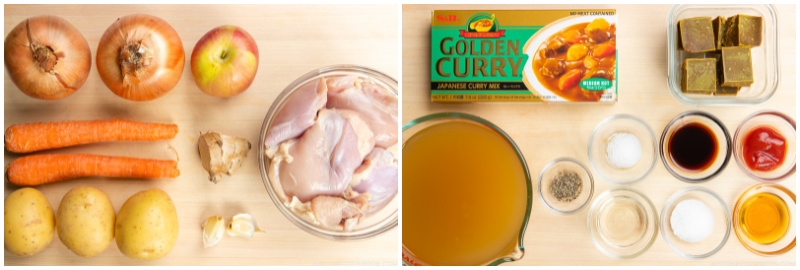
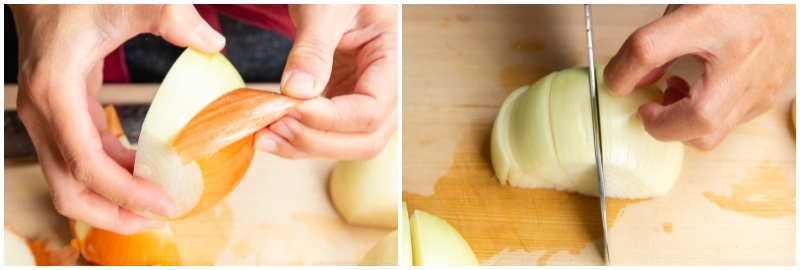
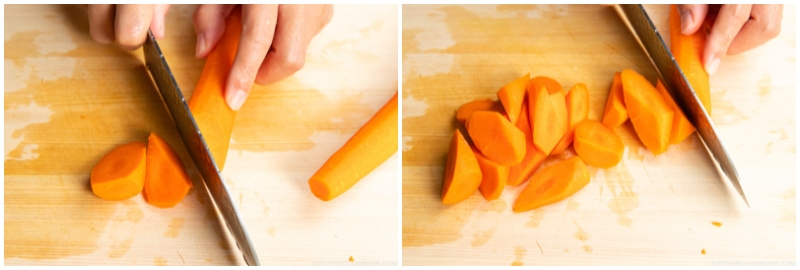
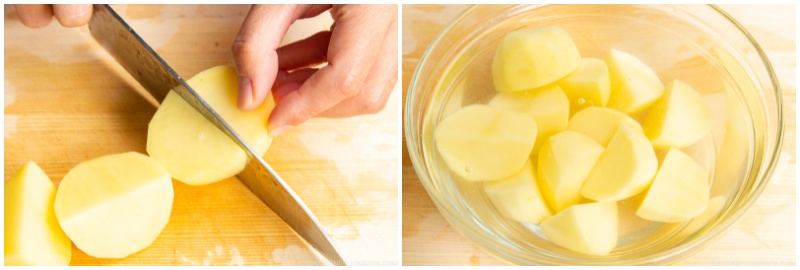
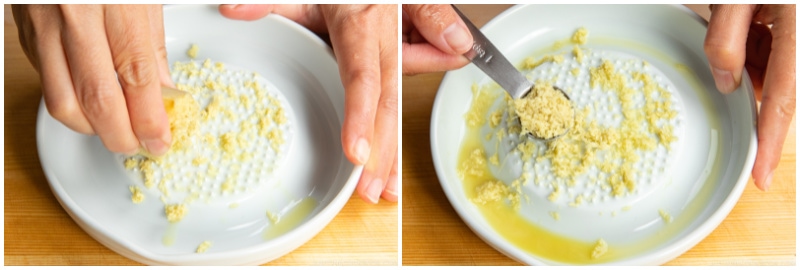
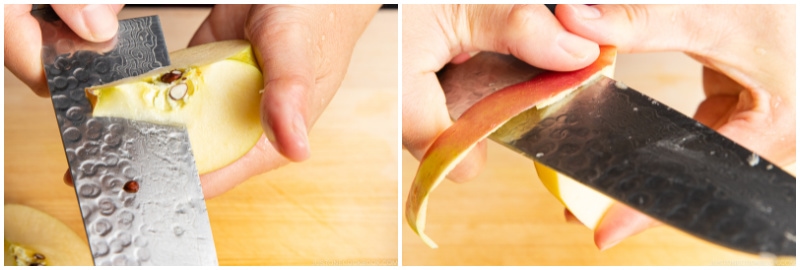
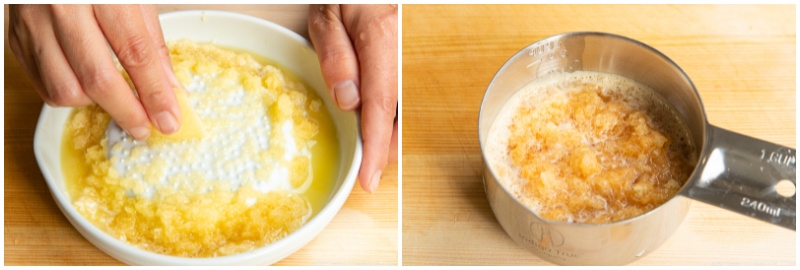
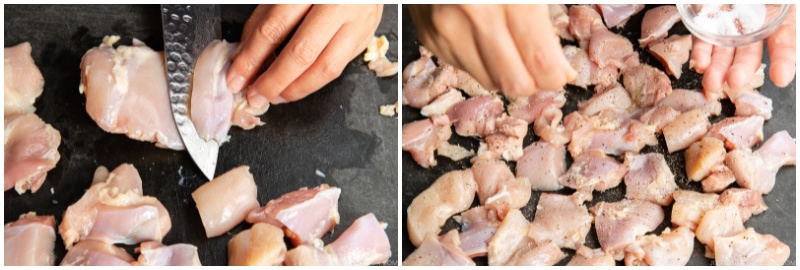
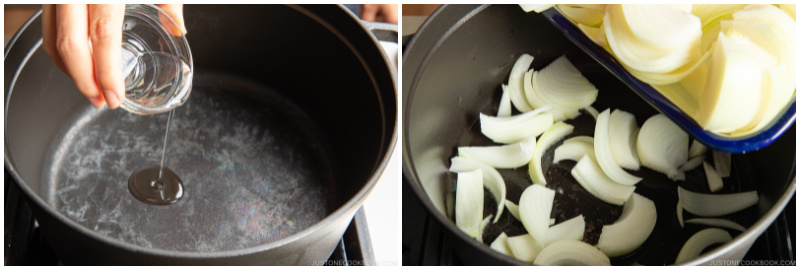
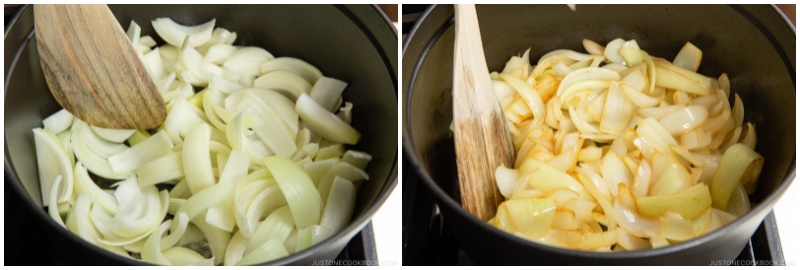
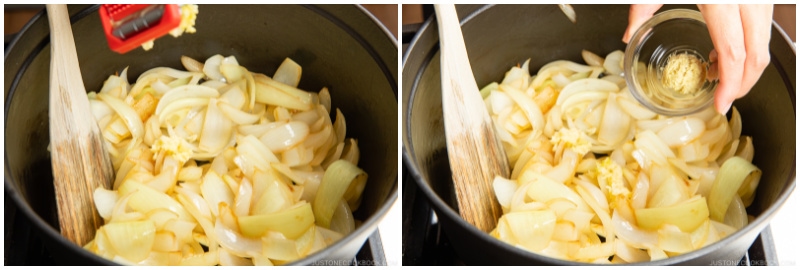
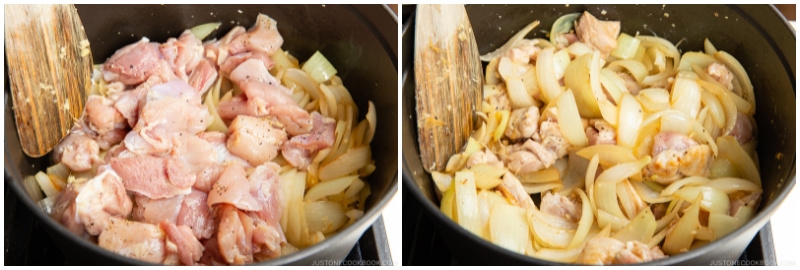
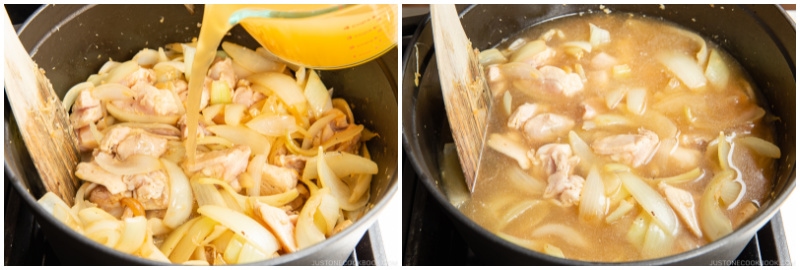
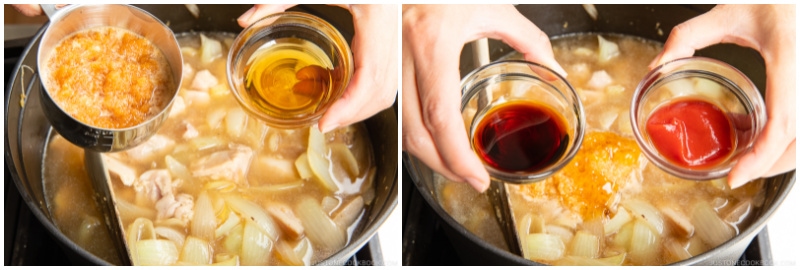
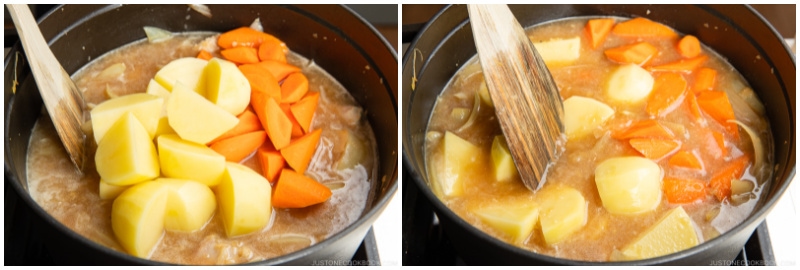
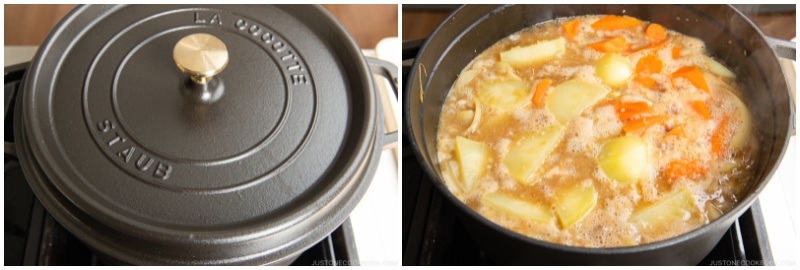
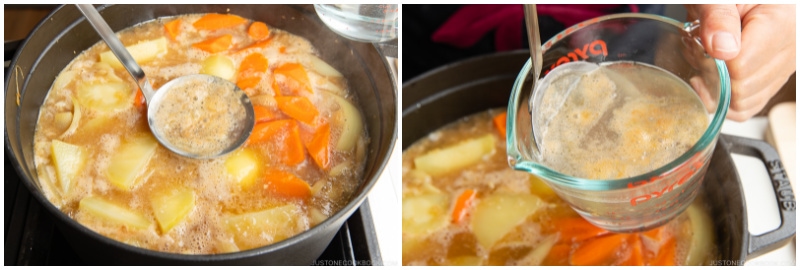
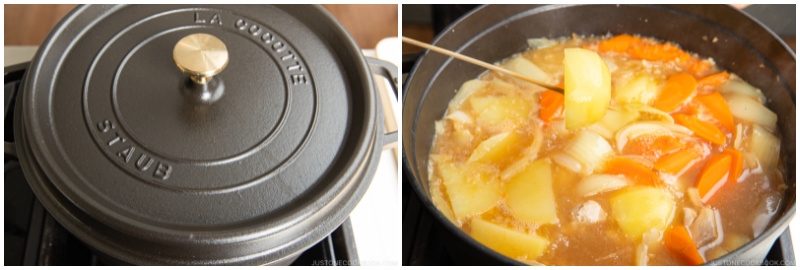
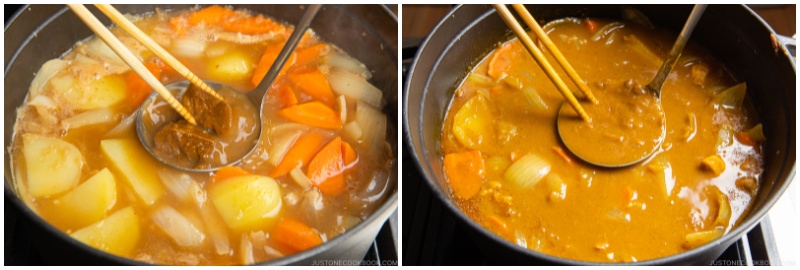
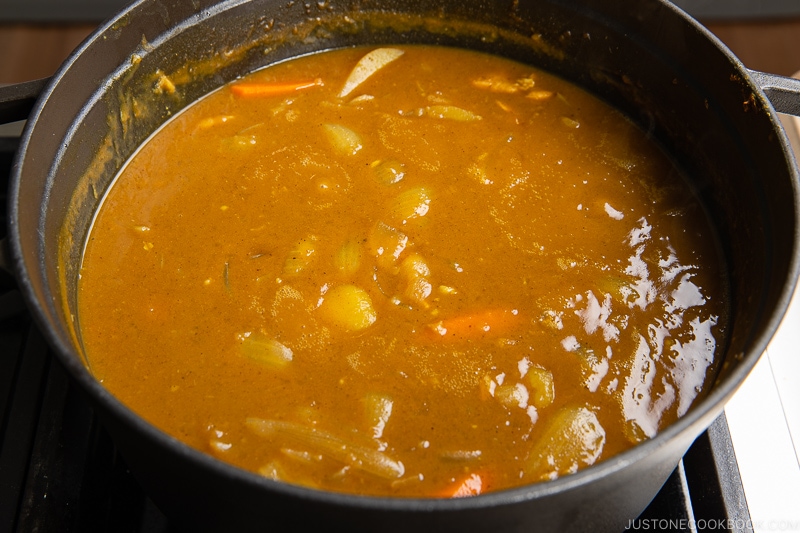
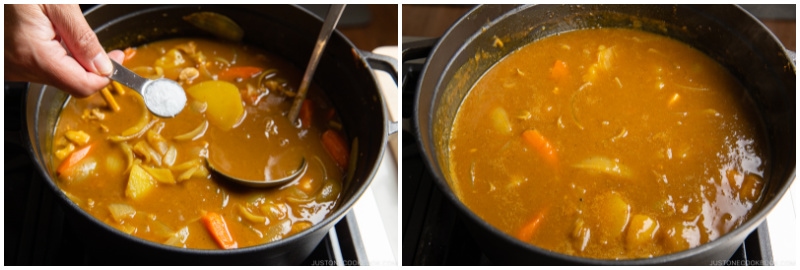
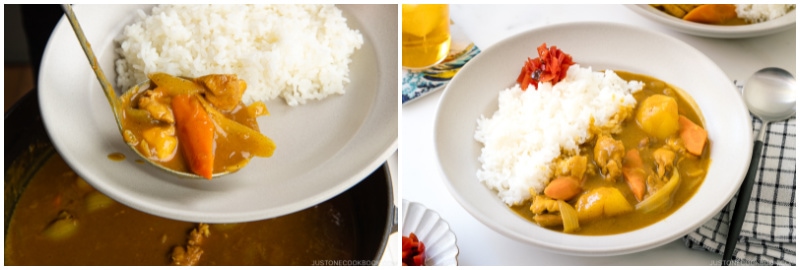

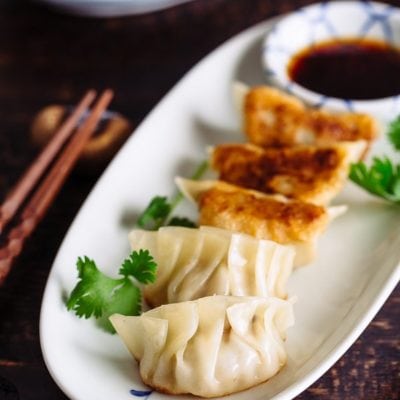
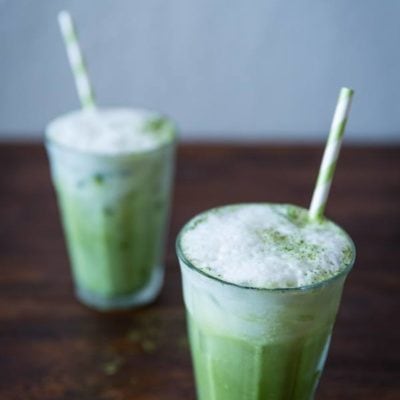

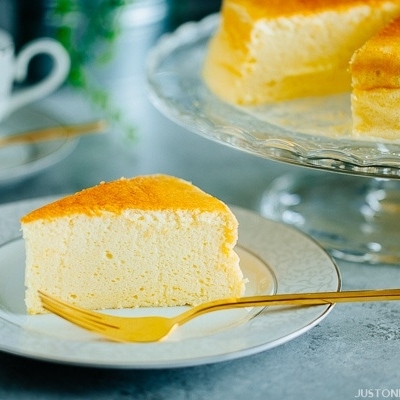
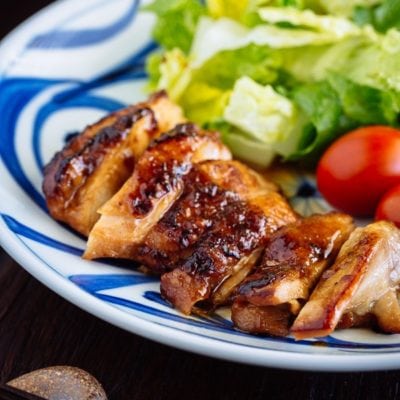
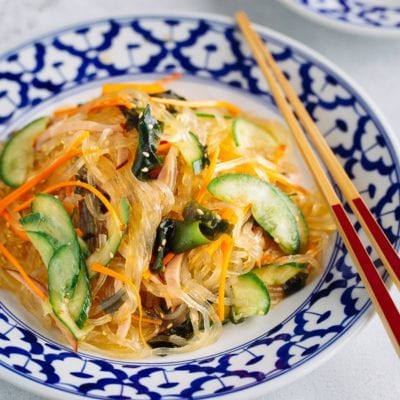
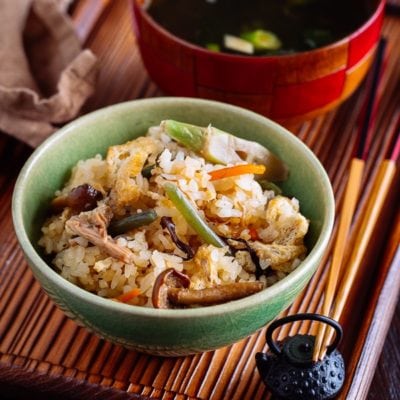
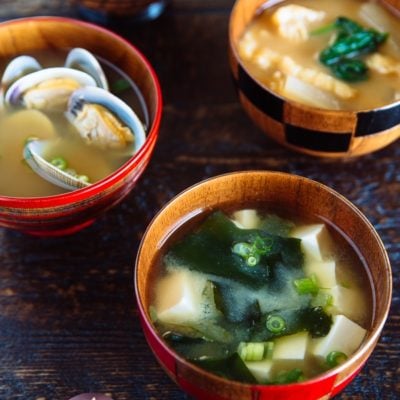
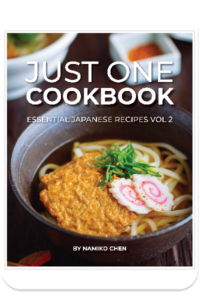

Just made this recipe and can tell for sure that is amazing!!! Used mild “Golden Curry” roux, but I’m considering to try a medium one next time and add a couple of apple cubes into the recipe.
Also i saw 2 variation of the “Golden Curry”, 1 was on english and 1 was completly on japanese. The japanese had like 10-20 gramms less but was cheaper for a whole 2 bucks! Is there any difference between them?
Hello, Natanel! Thank you very much for your kind feedback. We’re pleased to hear you enjoyed Nami’s recipe.
It depends on the country; different production lines might use slightly different sizes and ingredients to meet the country’s specific needs. However, we have not noticed a significant variation in taste. We hope you try it and choose your favorite one! 🥰